Affiliate links on Android Authority may earn us a commission. Learn more.
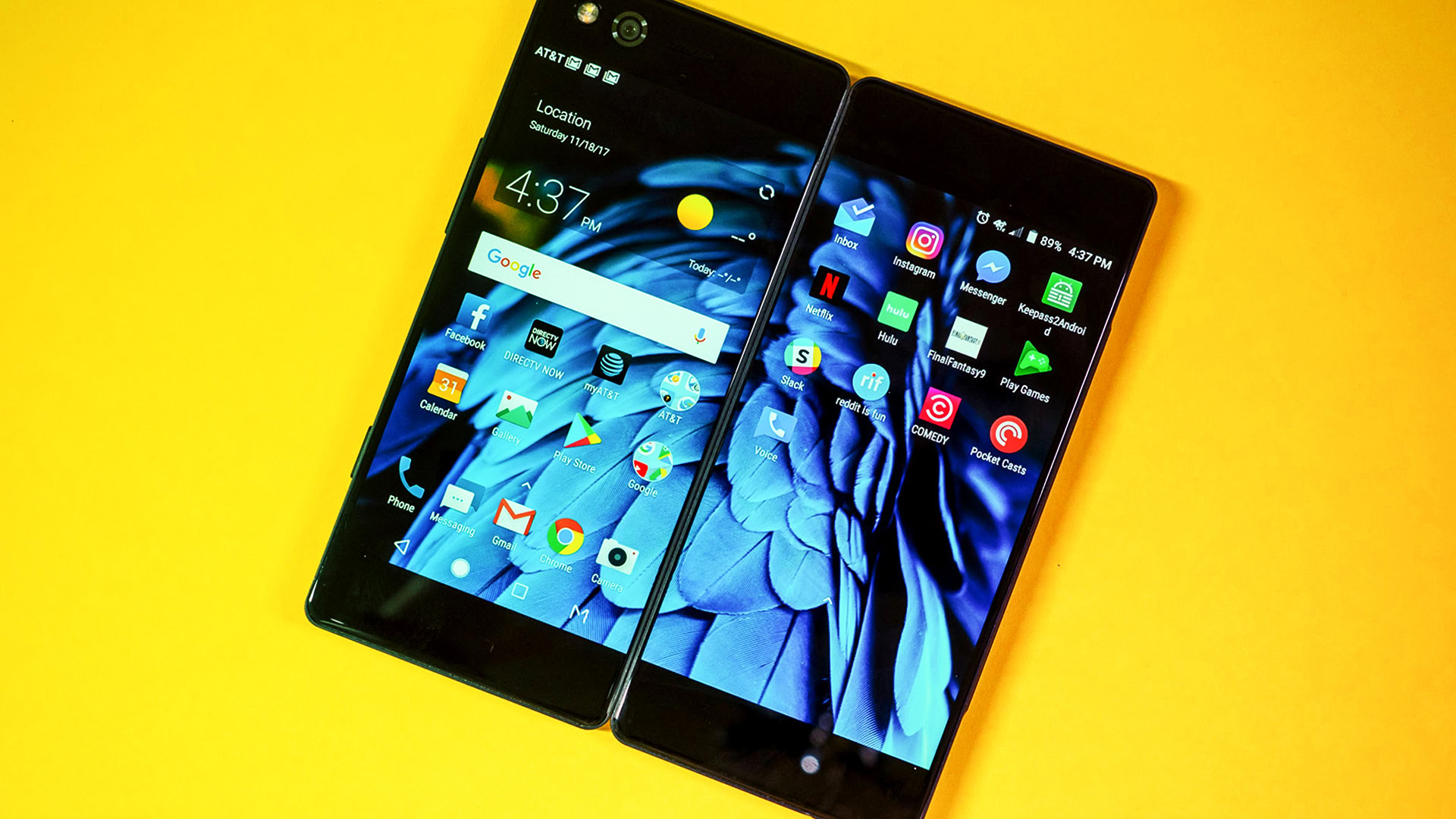
ZTE Axon M
What we like
What we don't like
Our scores
ZTE Axon M
ZTE tries to tackle the idea of a foldable phone by adding a second screen into the mix. While this might mean double the work, double the fun, and double the play, the story is not as simple as it initially seems. An undoubtedly interesting and cool look into what our smartphone futures could eventually be ends up getting bogged down by problems we still have today. This is our full ZTE Axon M review.
Design & Display
The obvious design choice lies in the foldable nature of the Axon M, and from a glance it almost looks like the original Nintendo DS. Instead of the screens being inside of the fold though, they’re on the outer shell. Unfolding the device reveals dual 5.2-inch IPS panels at Full HD resolution. Using both screens together as one in the extended mode yields an effective 6.75-inch tablet-like surface, which we will cover more later.
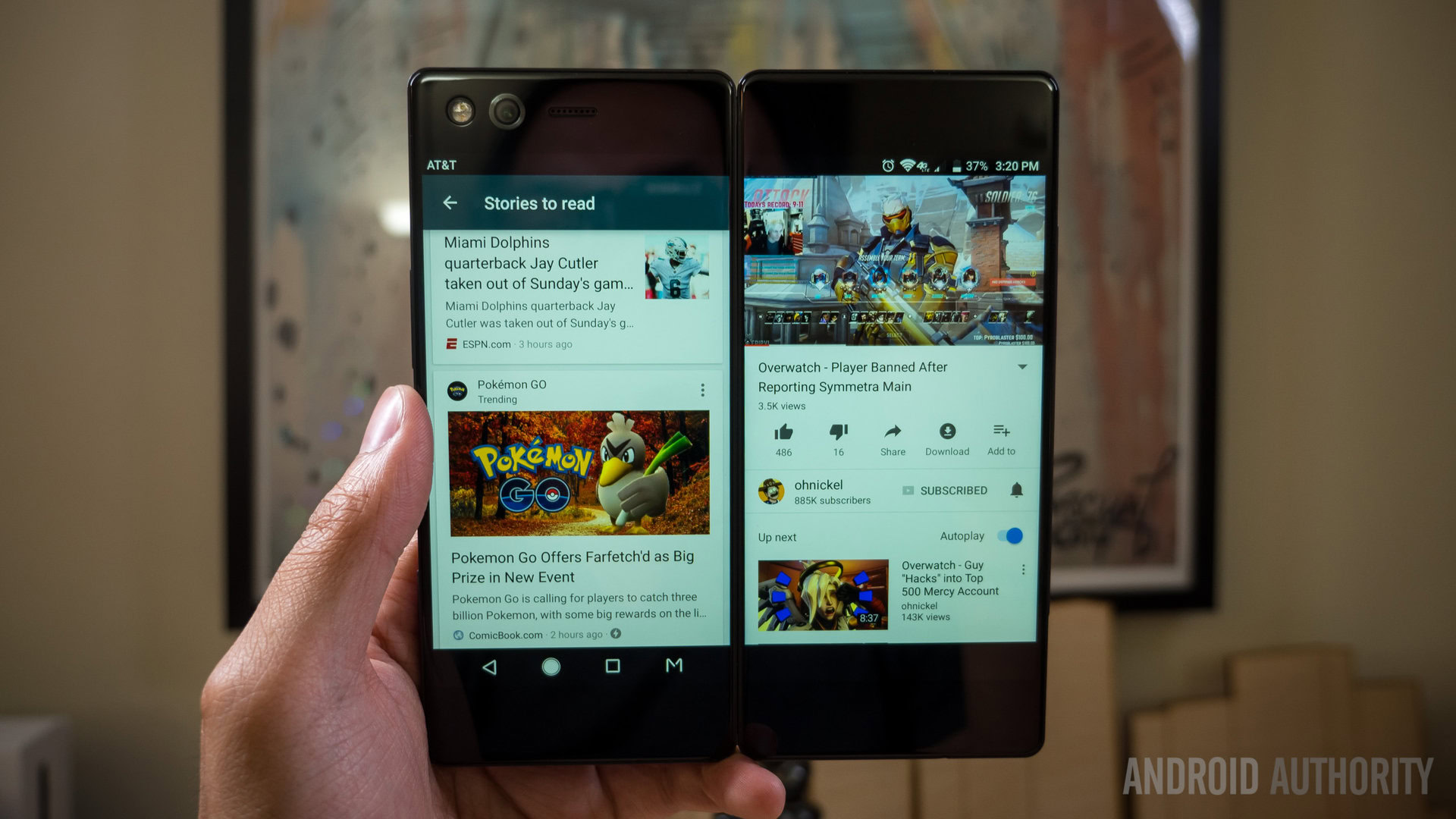
Taken on their own, either IPS panel is decidedly average – colors aren’t particularly punchy and I noticed that the secondary screen plays a tiny game of catch up to the main display, as elements on the right trail just behind everything on the left. This doesn’t break the overall experience, as it is only really noticeable when scrolling through long apps and websites. So, aside from there being two screens, these displays are otherwise not too special.
A cool look into our smartphone futures
There is little to say about the inner portion – this is all screens, all the time. Even the camera is comprised of a single lens atop the main display, and the phone requires you flip the closed phone around in order to access the rear or front facing modes.
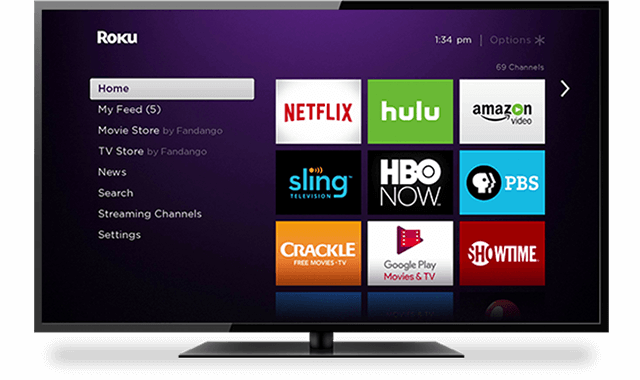
Over to the left of the main screen are all of the buttons, including one that is used for ‘TV Mode’. As this phone is an AT&T exclusive, the carrier pushes its DirecTV services as a main way of using one of the screens while multitasking. This TV Mode, however, can be set to any media program like Youtube, Netflix, or HBO Go – and holding down on the button triggers the programmable app while double tapping the key can open up the camera.
With the buttons all on the left and the fact that this phone unfolds to the right, left handed usage became the norm during my time with the Axon M. Using the phone one handed in the closed configuration wasn’t a big deal, but unlocking the device using my right hand required use of my index or middle finger on the power button, where the fingerprint sensor is embedded. This was awkward at times considering the flat power button is recessed somewhat into the frame of the phone – it was sometimes hard to press in such a way that the sensor could read my fingerprint simultaneously.
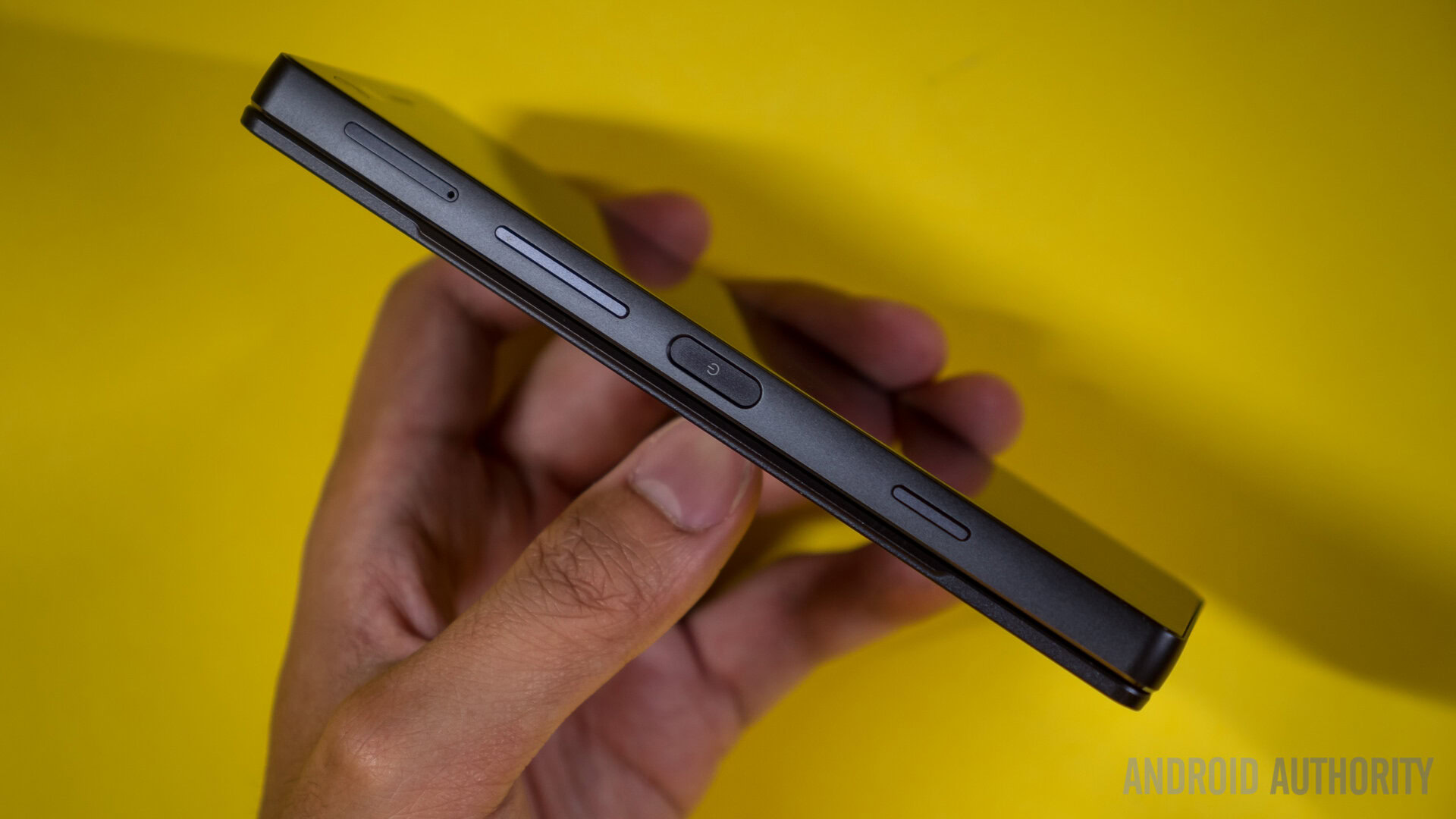
Overall, the heft lends the Axon M a sturdy feel, but having screens on both sides provides its own perils. Anyone that hates a smudgy backing on their regular smartphones will be annoyed by the fact those same unseemly marks are here being put on an actual display.
The heft lends a sturdy feel
I’ve yet to see any cases that enhance either the handling or add protection, so if you’re generally clumsy, every bump or drop could spell certain doom. My unit actually dropped one time because the screen simply slid off of a clean table surface, but luckily it didn’t fall directly on a screen and instead sustained a scuff on one of the sides. Thankfully ZTE and AT&T insure the phone for up to two years, so getting a replacement won’t be much of an issue if these worst-case scenarios occur.
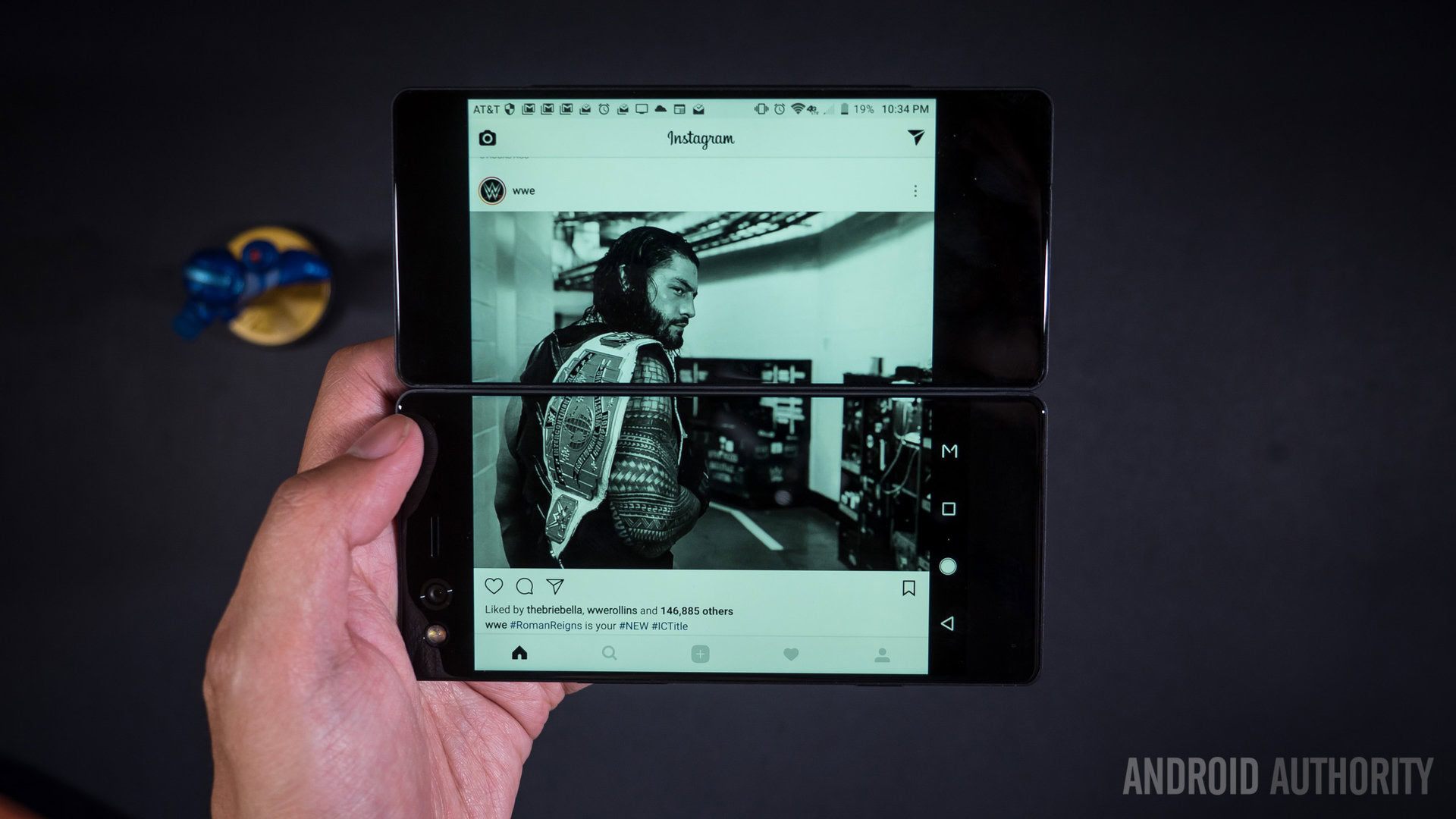
Specs
Before we get into the experience of using a dual screen phone, let’s get the rest of the specifications out of the way. Unfortunately for a phone that is expected to pull double time, the specs sheet reads like a single screen device from last year.
The Snapdragon 821 is here with 4 GB of RAM, expandable storage beyond the included 64 GB, and a 3,180 mAh battery.
The Snapdragon 821 is here with 4 GB of RAM, expandable storage beyond the included 64 GB, and a 3,180 mAh battery. While we have plenty of releases this year that surpass even the 6 GB of RAM threshold and rock the Snapdragon 835, ZTE somewhat shoots itself in the foot for not trying to put the absolute best specifications in their unique Axon M.
| ZTE Axon M | |
|---|---|
Display | Both displays: 5.2-inch TFT LCD 1920 x 1080 resolution 426 ppi Corning Gorilla Glass 5 |
Processor | 2.15 GHz quad-core Qualcomm Snapdragon 821 |
RAM | 4 GB |
Storage | 64 GB |
MicroSD | Yes, up to 2 TB |
Cameras | Rear camera: 20 MP sensor with an f/1.8 aperture, PDAF, dual-image stabilization, dual-LED flash Front camera: N/A - rear-facing camera can be utilized in front-facing mode |
SIM | Nano |
Battery | 3,180 mAh Non-removable Quick Charge 3.0 |
Connectivity | Bluetooth 4.2 USB Type-C USB 2.0 Wi-Fi 802.11 a/b/g/n/ac 2.4 GHz / 5 GHz VoLTE |
Audio | 3.5 mm headphone jack |
Software | Android 7.1.2 Nougat |
Dimensions and weight | 150.8 x 71.6 x 12.1 mm 230 g |
Battery
Using both screens cuts the single-screen battery life in half
As far as the battery life is concerned, using the phone in a closed configuration and using only one screen yielded about 4 hours of screen on time, which is typical for a normal phone.
On a few occasions I tried to use the phone almost always with both screens activated, either in the extended or dual mode, and the battery life was pretty much cut in half, with my SoT dropping down to about 2.5 hours. I was tickled by how much sense that made – with two screens on one battery, this is basically what we expected.
Camera
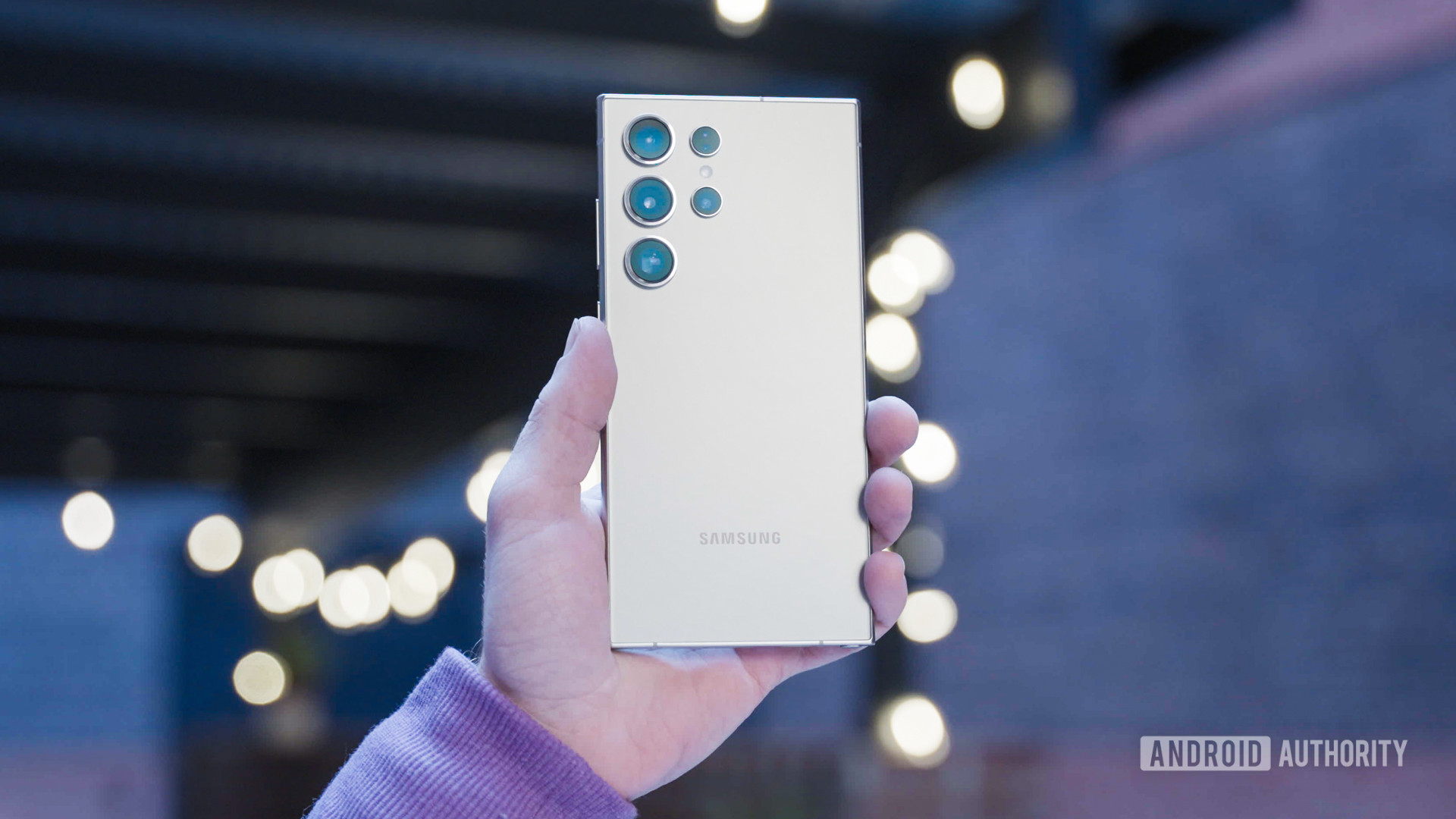
The camera is made up of one unit that is found above the main display, and is a 20 MP shooter that lacks a number of enhancements we could argue are necessary for high end smartphone photography – starting with optical stabilization.
The app does have a few different modes including somewhat robust manual controls, which is nice. Unfortunately, it’s a bit of a pain to have to flip the phone around every single time to do rear or front facing photos. It is a novel idea to take advantage of either screen for the one powerful shooter – and I do like using the dedicated button as a shutter release – but the results just don’t stack up.
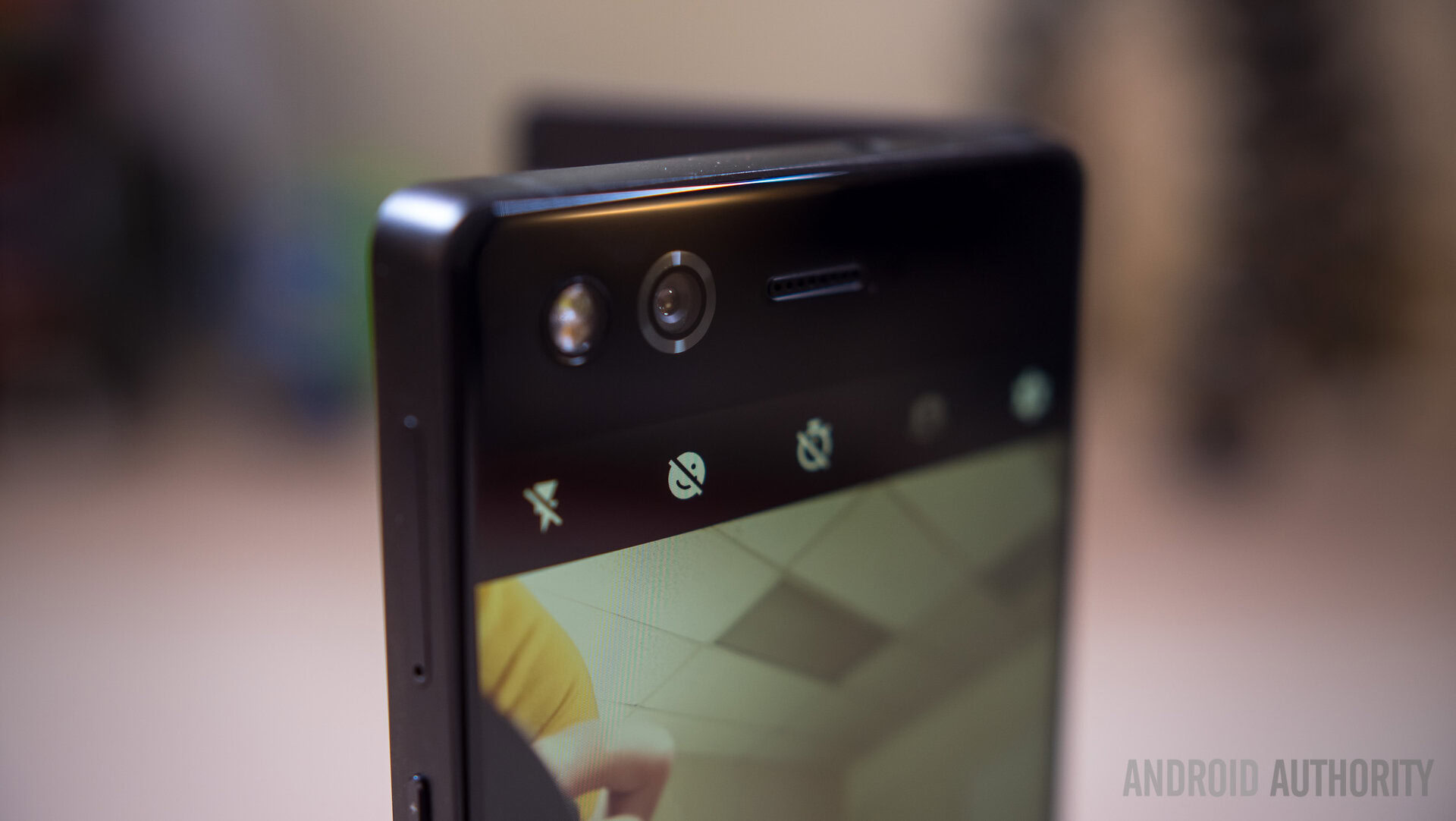
Having YouTube on one side while drafting emails on the other became a common app pair.
Without stabilization, pictures often had blur in all but the brightest conditions. Alongside this main issue is the camera’s trouble with dynamic range, even with HDR left on. The lack of stabilization also shows in video capture, where shakiness breaks otherwise decent looking 4K footage. While the Axon M can be a decent shooter in bright conditions, the way it falls apart in even medium lighting is hard to look past.
Hardware
A headphone jack is included and the onboard speaker is powered by Dolby Atmos
The rest of the phone is pretty standard fare – a headphone jack is included here, and the onboard speaker is powered by Dolby Atmos. It is a single firing unit, though, and it performs just well enough to share content that you might be mirroring across both displays.
Sharing content with someone else via the aforementioned tent configuration is one of the cooler aspects of the Axon M, and if you and a partner are indeed looking to watch the same video, this is the only phone that can do it. But what about all of the other uses for a dual screen device? All those possibilities are designated by the ‘M’ in the softkey bar, which changes the display mode.
It’s possible to have the phone unfolded with only the left screen on, a stretched mode where both screens in portrait are used as one big canvas, a mirrored mode where both screens show the same stuff, and finally a dual mode where either screen can be used independently for multitasking.
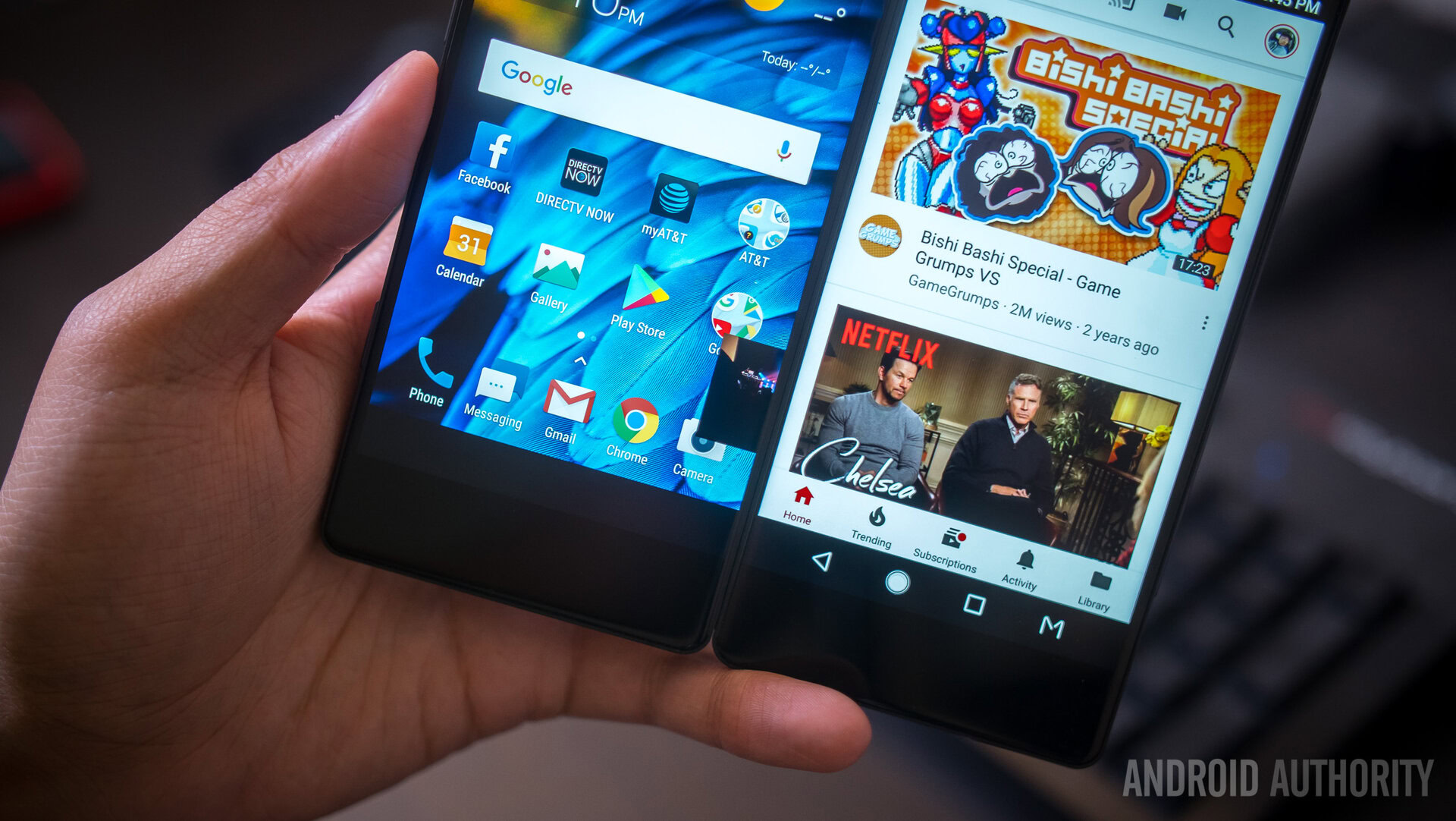
Software
Multitasking is a focus for the Axon M, and not just for media – even though that might be the best use case. Having YouTube on one side while drafting emails on the other became a common app pair, and putting the entire phone in either portrait or landscape was possible. There are a couple of tradeoffs – in landscape mode, the media looks much better; in portrait mode, typing is immensely easier especially when swipe typing.
The Axon M is the only phone capable of dual-monitoring the smartphone experience
One of my favorite dual tasks has been for gaming, where I had Final Fantasy IX (I promise one day I’ll finish it) on the main screen while the secondary display showed a walkthrough that I referenced whenever I got stuck. The dual screen mode is the method that makes the most sense, and anyone that is actually looking to dual-monitor their smartphones can look at the Axon M as the only phone capable of such a feat.
Both displays can be used together as a whole canvas
In another mode, both displays can be used together as a whole canvas, as the software stretches apps out. This is an interesting but ultimately flawed approach, where on the one hand you have double the screen real estate but on the other there is a distracting line of bezel cutting right down the middle.
While I could suspend reality and just forget that the line was there, it was in gaming that I found it annoying. Again, tradeoffs – having controls on either screen and a large overview of the game was fine, but cutting whatever was in the center (usually the character I was controlling) proved distracting and ultimately awkward.
Using this extended mode definitely brought about a ‘wow’ factor, but even those impressed people I showed this to soon noticed the same nagging issues.
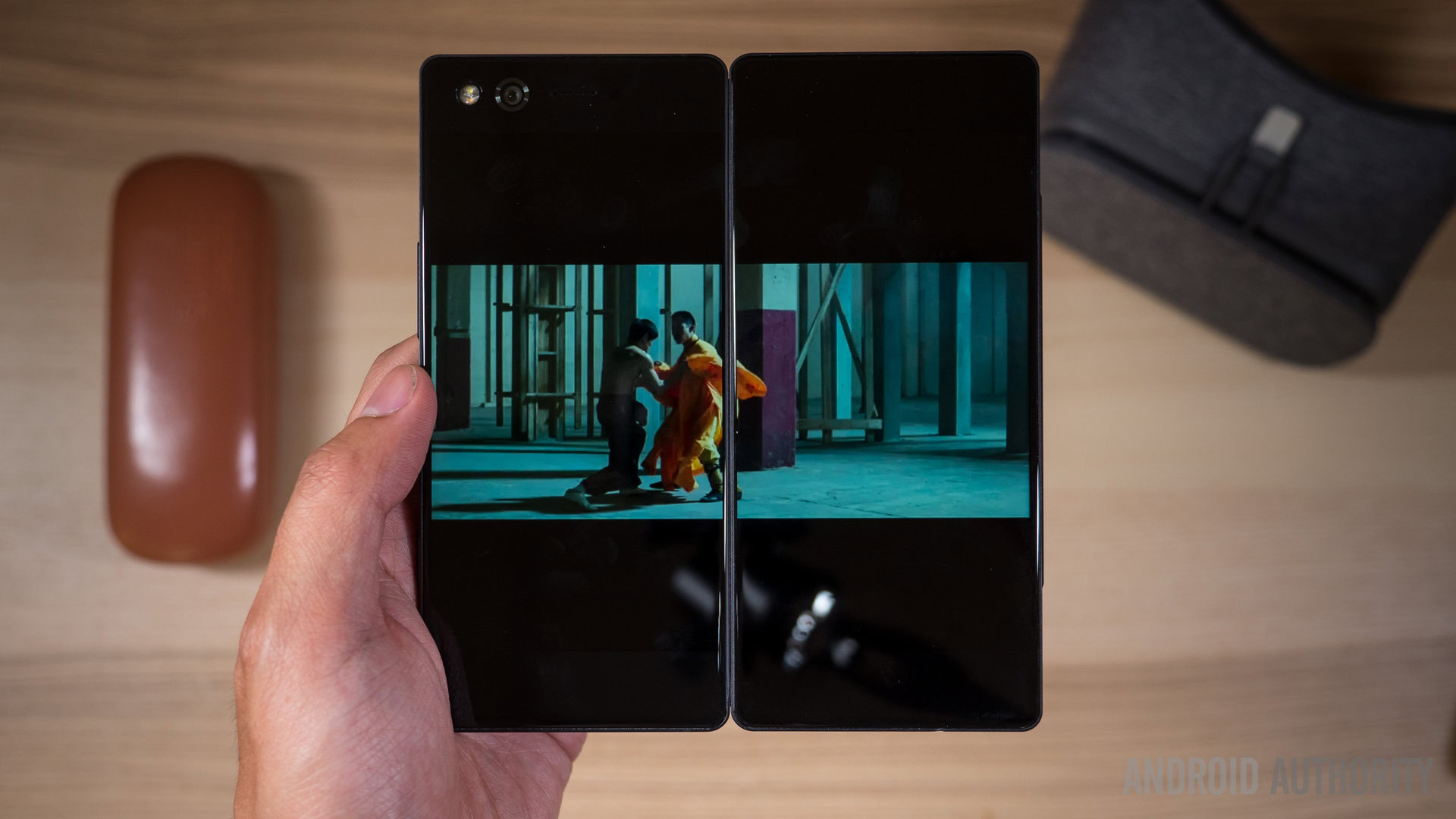
Final thoughts
I was initially enamoured with the dual screen usage, but I later realized that I was tolerating the one aspect which bogs down the rest of the experience – the software. Despite the performance specifications being subpar for what could be a very demanding device, the software is even less equipped for the task.
It gets us excited to see what comes next
It comes down to a lack of attention to detail – for example, why not make it so that the phone could be used in a single screen mode but switched to either display at will? Or, when in the stretched configuration, why does Instagram require the phone to be in landscape mode all the time even when auto-rotate is off? And while we’re at it, why is the original multiwindow Android function disabled even when using a single screen? Imagine the possibility of using three or even four apps at once, even if the specifications probably wouldn’t be able to handle it.
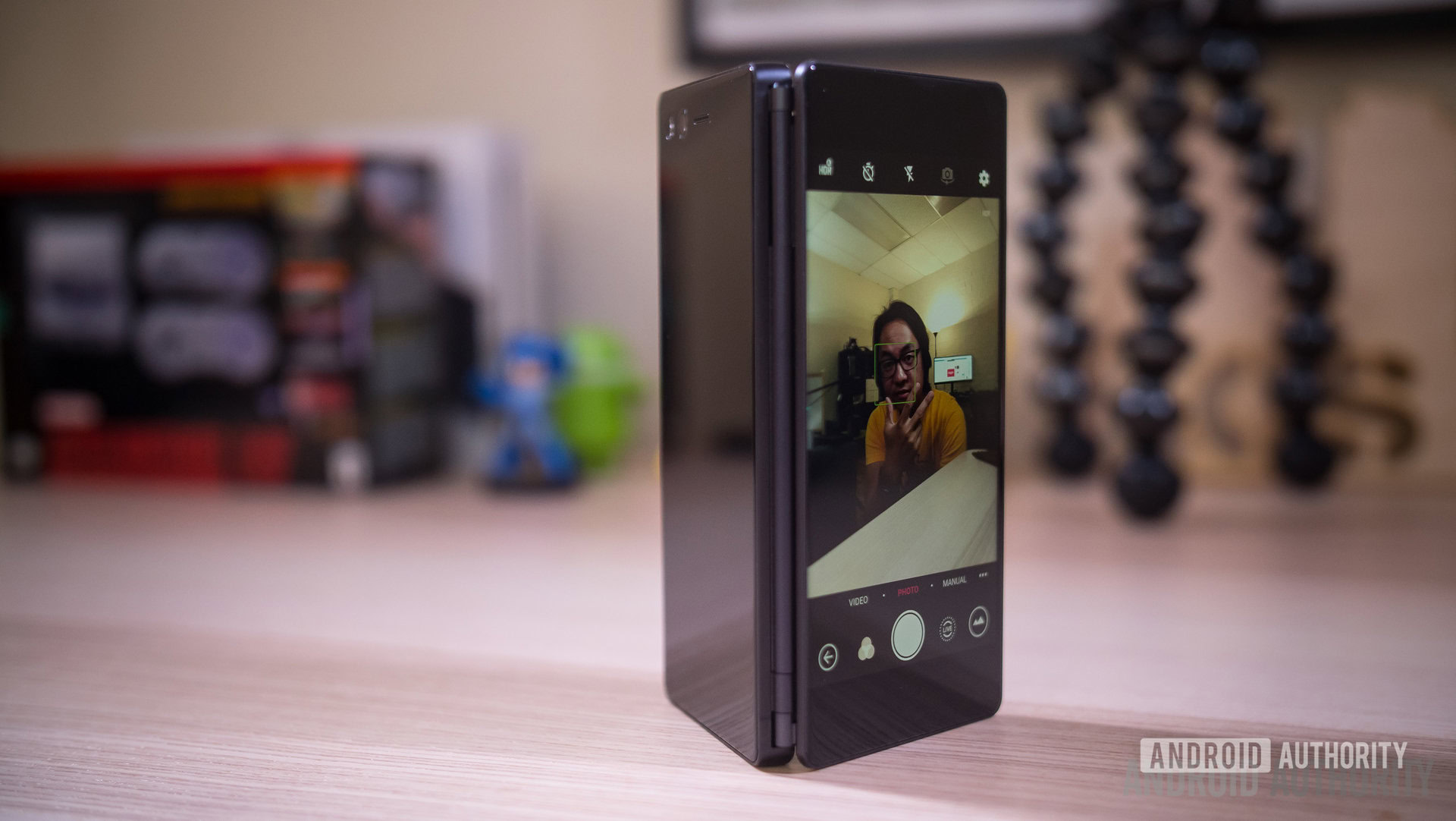
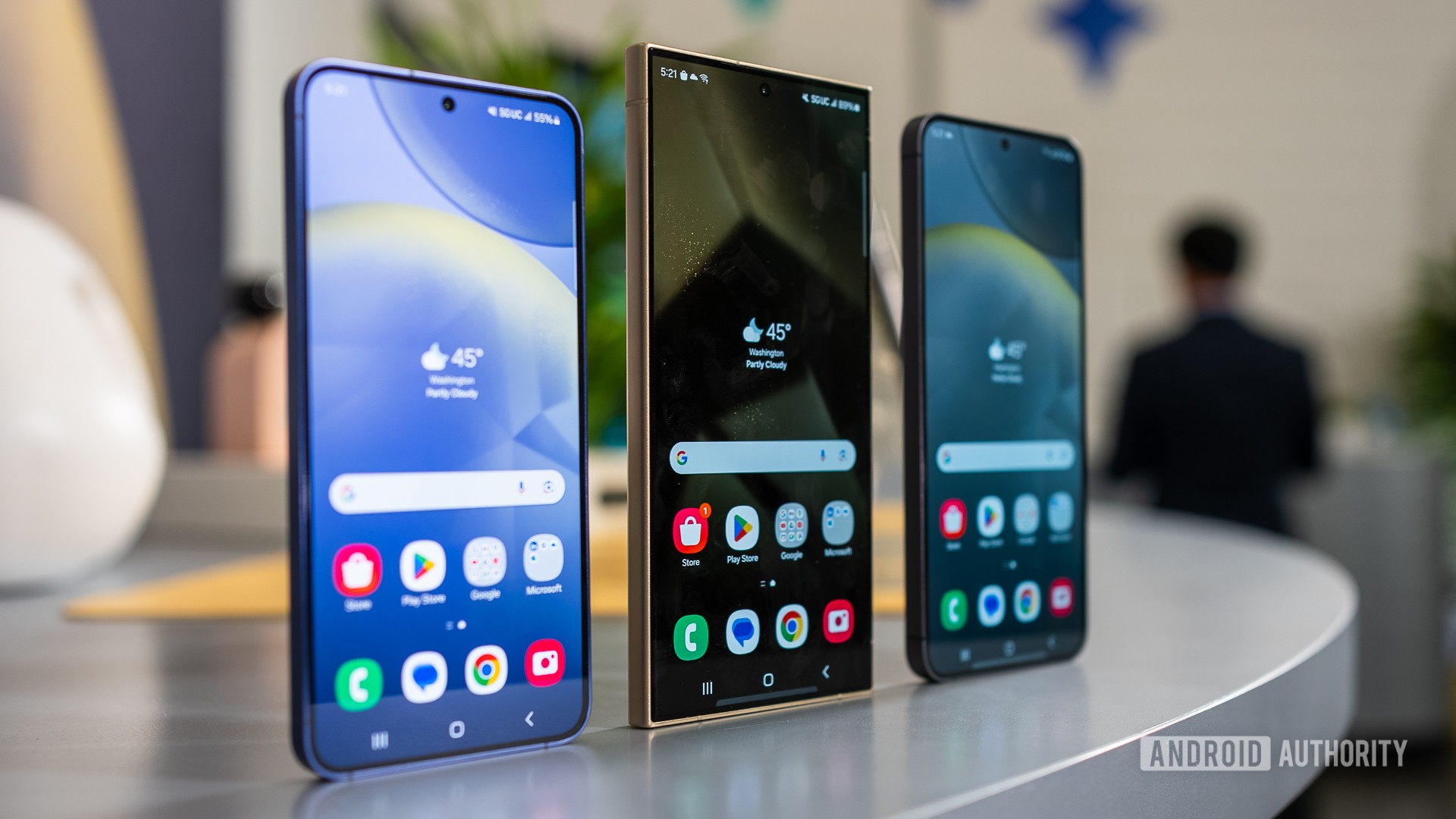
As I mentioned earlier, this phone seems to be wrestling with its tradeoffs often – using dual screens can be a great tool for multitasking, but it requires users to adapt and have patience. All of this could be addressed in future software updates, sure, but the Axon M will still be cut at the knees with a specs sheet that is sub-flagship quality.
I wish I didn’t have to be so hard on a phone that is completely unique to its competition – but unfortunately, the reality of the Axon M kept hitting me every time I folded the device back to a single screen phone and used it like any normal device: simply put, the dual screen just doesn’t fulfill any real needs and any attempt to create them falls short.
It isn’t enough to just put another screen on an existing smartphone if it doesn’t first address its core experience
It isn’t enough to just put another screen on an existing smartphone if it doesn’t first address its core experience – and that, in a nutshell, is the main problem with the ZTE Axon M. It gets us excited to see what comes next, but unless you’re actually looking for a dual screen phone, simply having this one won’t dramatically change your Android life.